The AnandTech Coffee Lake Review: Initial Numbers on the Core i7-8700K and Core i5-8400
by Ian Cutress on October 5, 2017 9:00 AM EST- Posted in
- CPUs
- Intel
- Core i5
- Core i7
- Core i3
- 14nm
- Coffee Lake
- 14++
- Hex-Core
- Hyperthreading
Ashes of the Singularity Escalation
Seen as the holy child of DirectX12, Ashes of the Singularity (AoTS, or just Ashes) has been the first title to actively go explore as many of DirectX12s features as it possibly can. Stardock, the developer behind the Nitrous engine which powers the game, has ensured that the real-time strategy title takes advantage of multiple cores and multiple graphics cards, in as many configurations as possible.
As a real-time strategy title, Ashes is all about responsiveness during both wide open shots but also concentrated battles. With DirectX12 at the helm, the ability to implement more draw calls per second allows the engine to work with substantial unit depth and effects that other RTS titles had to rely on combined draw calls to achieve, making some combined unit structures ultimately very rigid.
Stardock clearly understand the importance of an in-game benchmark, ensuring that such a tool was available and capable from day one, especially with all the additional DX12 features used and being able to characterize how they affected the title for the developer was important. The in-game benchmark performs a four-minute fixed seed battle environment with a variety of shots, and outputs a vast amount of data to analyze.
For our benchmark, we run a fixed v2.11 version of the game due to some peculiarities of the splash screen added after the merger with the standalone Escalation expansion, and have an automated tool to call the benchmark on the command line. (Prior to v2.11, the benchmark also supported 8K/16K testing, however v2.11 has odd behavior which nukes this.)
At both 1920x1080 and 4K resolutions, we run the same settings. Ashes has dropdown options for MSAA, Light Quality, Object Quality, Shading Samples, Shadow Quality, Textures, and separate options for the terrain. There are several presents, from Very Low to Extreme: we run our benchmarks at Extreme settings, and take the frame-time output for our average, percentile, and time under analysis.
All of our benchmark results can also be found in our benchmark engine, Bench.
MSI GTX 1080 Gaming 8G Performance
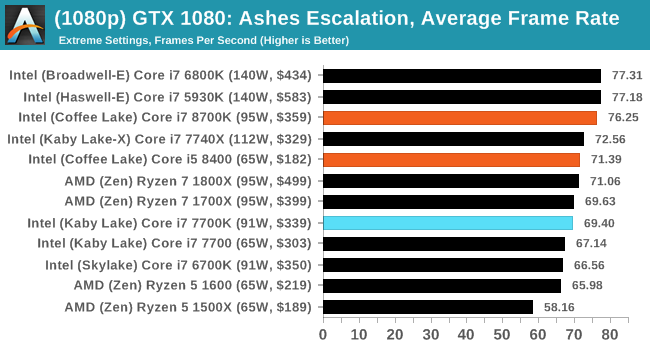
1080p

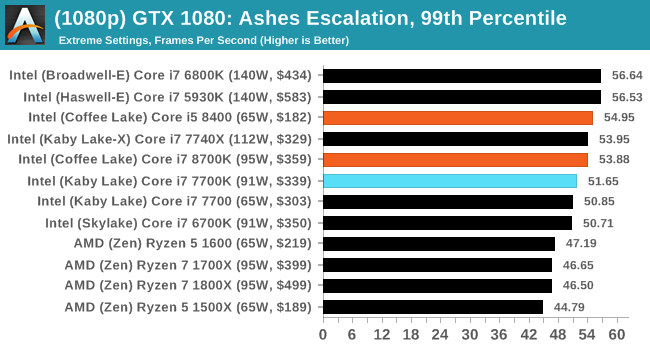
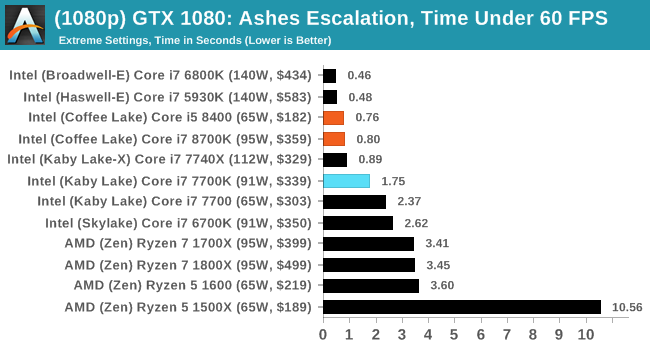
4K
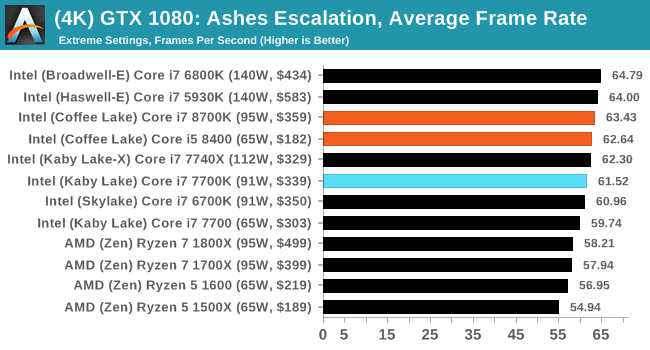
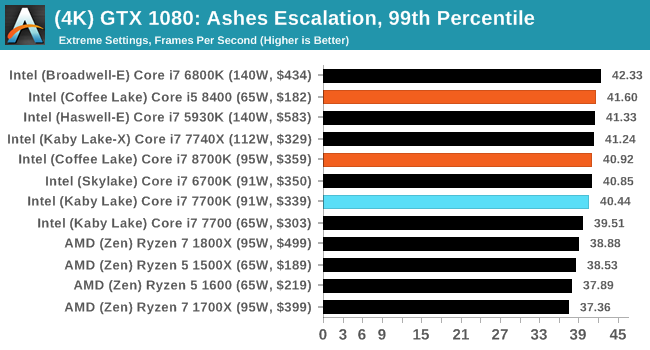




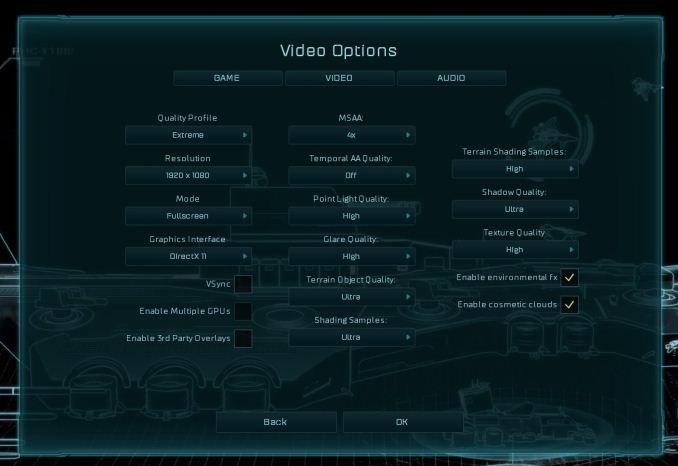








222 Comments
View All Comments
risa2000 - Friday, October 6, 2017 - link
This actually makes sense. I wonder how Ian explains (even to himself) that additional 2 new cores in i7-8700K do not push the power envelope at all compared to i7-7700K. Is it because in Anandtech benchmark 8700K uses only 4 cores? Or uses 6 but throttles them down to stay in power limit?sonny73n - Friday, October 6, 2017 - link
I was also puzzled about some test results in this review but after reading thru the comment section, I conclude that this is indeed his worst review to date. He mentioned that he only had 3 days for this review. Maybe this is the reason.sonny73n - Friday, October 6, 2017 - link
I forgot to mention his lack of AMD comparisons among little mistakes here and there.DanNeely - Friday, October 6, 2017 - link
At a guess Anands temp test isn't using the bigger AVX sizes because at full load the hugely wide calculations use a lot more power than anything else; to the extend that by default they have a negative clock speed offset of several hundred MHz. I'm not sure how or if MCT shenanigans affect the AVX clock speed.Ian Cutress - Saturday, October 7, 2017 - link
You'd be surprised at how aggressively Intel is binning. We've said for a long while that Intel never pushes its chips to the limits in DVFS or frequency (like AMD), so if they were willing to make higher SKUs and commit to their usual warranty, it should be an easy enough task.Our power benchmark loads up all threads.
Ian Cutress - Saturday, October 7, 2017 - link
Is Paul/Igor testing at-wall power consumption at stock? That might add a bunch. Even the lower end CPUs seem out of whack there. Our power numbers are just for the CPU, not the at wall.Our numbers are derived from the internal calibration tools that the processor uses to determine its own power P-states, which in effect is directly related to the turbo. We run a P95 workload during our power run, and pull the data from the internal tools after 30 seconds of full load, which is long enough to hit peak power without hitting any thermal issues or PL2/PL3 states.
There seems to be a lot of boards that screw around with multi-core turbo this generation, which may also lead to higher power consumption numbers.
MingoDynasty - Thursday, October 5, 2017 - link
There is a typo in the article. 7700K has a TDP of 91W, not 95W.Ian Cutress - Saturday, October 7, 2017 - link
Intel played shenanigans with the 7700W TDP. They gave it as one value in the first briefings, then switched to the other just before launch, then switched back again after launch.mapesdhs - Tuesday, October 10, 2017 - link
I know it's only a typo, but I still had to laugh at "7700W TDP". ;D#EditingForATForums
W1nTry - Thursday, October 5, 2017 - link
There also seems to be a price change to the 1800x and 1700x which are as much as 100USD lower than what's reflected on the charts. I think that would factor in notably.